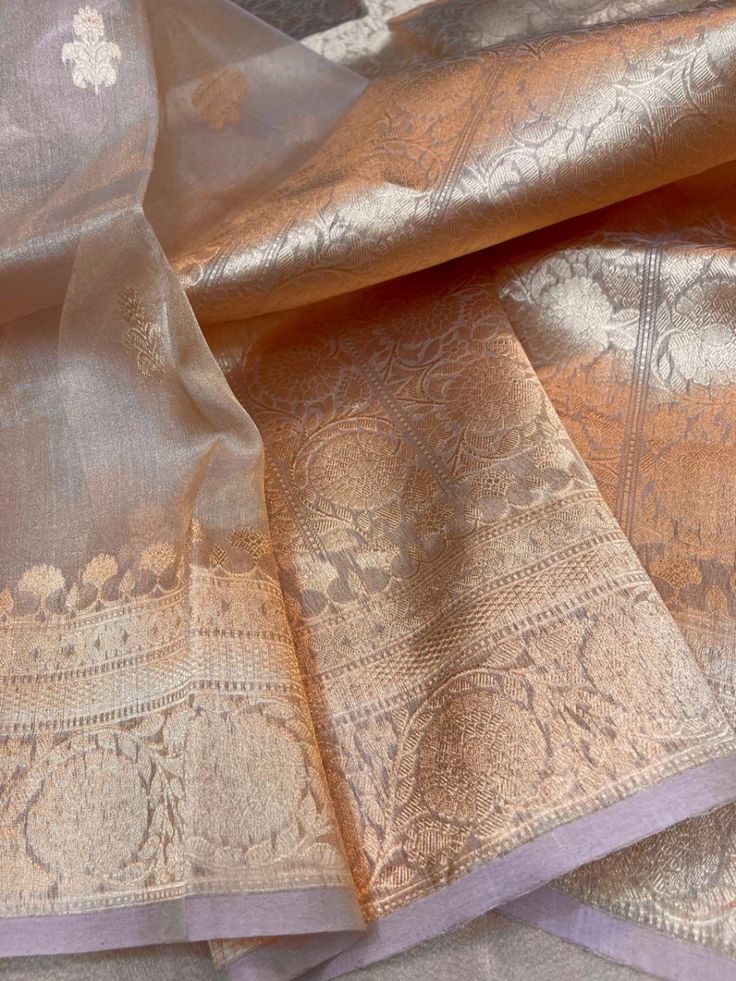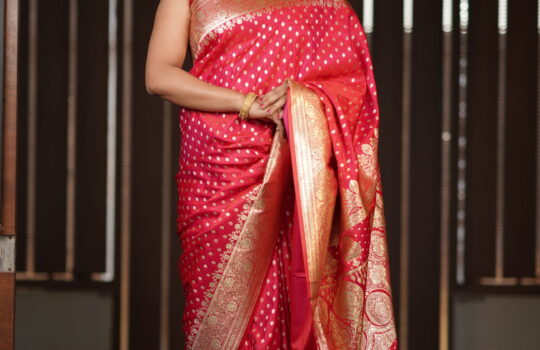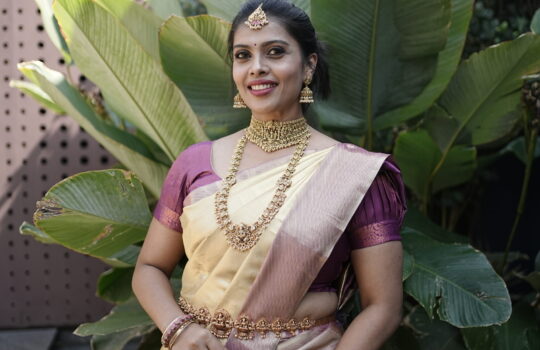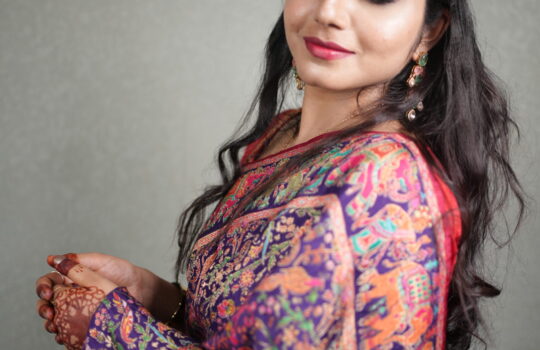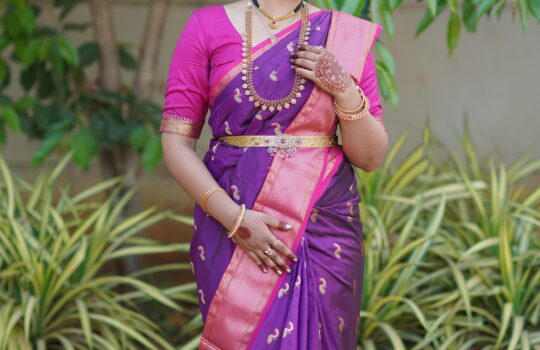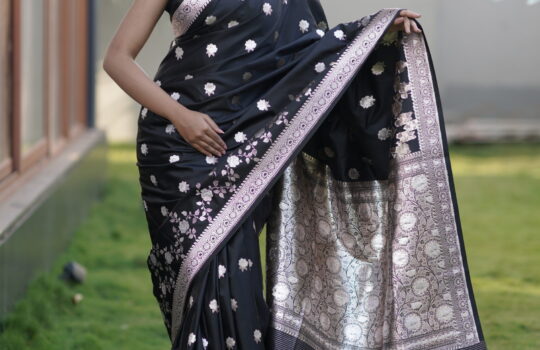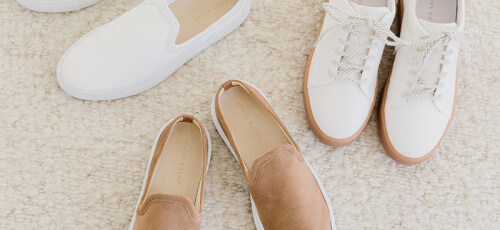
A tissue silk saree is an exquisite piece of traditional Indian clothing renowned for its elegance, grace, and craftsmanship. Fabric for sarees is created by weaving silk threads together with metallic threads such as gold or silver for an eye-catching shimmering surface that makes each saree stand out. Tissue silk sarees stand out for their striking and radiant appearance under light, making them the ideal choice for special events and ceremonies. Originating from weaving hubs such as Banaras, Kanchipuram and Mysore. these sarees represent the expertise of skilled artisans who have perfected the art of crafting intricate designs using metallic threads woven through fine silk fabric to produce lightweight yet durable fabric with an unrivalled sense of grandeur.
Tissue silk sarees come in an extensive array of colors, from the more classic traditional reds, royal blues, and greens to pastel shades and modern metallic hues allowing for versatility when styling them. Border and pallu designs often showcase some of the most intricate motifs, such as paisleys, peacocks or florals woven into fabric. These stunning sarees are widely admired not only for their beauty, but also due to their versatility. Brides or close family members often select these stunning attires during wedding ceremonies for their significance, elegance and festive atmosphere they convey. Tissue silk sarees are especially favored during festivals like Diwali or Navaratri, where their metallic threads add an air of celebration. Furthermore, they’re perfect for formal gatherings like receptions and high-profile events where an air of sophistication is desired.
Tissue silk sarees may look delicate, but when treated properly they can last generations. Careful handling such as dry cleaning is required to preserve their sheen and texture while being stored in a cool and dry location is suggested to avoid dust accumulation. While lightweight fabric needs special handling to avoid damaging metallic threads. Tissue silk sarees make timeless pieces of clothing which can be passed down through families from bride to groom or other celebrants – representing tradition beauty craftsmanship perfectly at any special event or celebration.
What Makes Tissue Silk Saree Special ?
Tissue silk sarees stand out as being an unparalleled combination of elegance, luxury, and craftsmanship. A saree is typically handcrafted using silk fabric and metallic zari threads crafted of either gold or silver, giving the garment its characteristic shimmer that captures light beautifully and makes it ideal for grand occasions such as weddings and festivals. Tissue silk’s lightweight nature ensures it drapes effortlessly without feeling bulky, offering comfort while exuding elegance. Handwoven designs adorned with intricate zari work are a testament to the skill and tradition of artisans from regions like Banaras and Kanchipuram. Tissue silk sarees come in an array of exquisite patterns, from classic paisleys and florals to minimalistic designs with less obvious motifs like dots. Their luxurious sheen makes tissue silk sarees timeless pieces perfect for celebratory events where elegance and tradition play key roles.
Fabric Composition
Tissue silk sarees are known for their luxurious and unique qualities due to the fabric composition. Made from silk fabric – known for its smooth texture, natural shine, and soft feel – tissue silk stands out with the addition of metallic threads made of gold or silver which add a shimmering quality that truly make this type of saree stand out.
Pure silk provides the main body of the saree and features its characteristic smooth drape and sheen. Metallic threads woven in patterns add depth and dimension, creating an alluring shimmer when illuminated by light rays reflected off its fabric surface. Depending on design elements used they may cover all or just parts of borders and pallu.
Modern tissue silk sarees often utilize synthetic fibers or blended fabrics in order to cut costs or extend durability, while traditional tissue silk sarees use high amounts of natural silk and pure zari threads, maintaining their luxurious aesthetic and feel. This combination makes tissue silk not only visually striking but also stands as a testament to elegance, tradition, and craftsmanship.
Design Pattern
Tissue silk sarees are known for their intricate and diverse design patterns that add charm and sophistication. You may see classic motifs such as paisleys, floral patterns or peacock designs which symbolize beauty, nature and grace on these fabric masterpieces. Paisleys with their elegant teardrop shapes add a regal look, while floral motifs create timeless beauty – often found as borders or pallu designs. Peacock patterns symbolize royalty while simultaneously being rich with cultural symbolism. Geometric designs such as stripes, diamonds and checks appeal to contemporary tastes with their more minimalistic and contemporary appearance. Zari work, composed of metallic threads used on sarees woven by artisans around India for use on textile saris, can add an eye-catching shimmer of gold or silver that complements these geometric designs perfectly. Zari motifs may range from delicate butis to intricate brocade patterns woven throughout a tissue silk saree, often highlighted by borders and pallus that feature more elaborate and detailed zari work. With their blend of traditional and contemporary designs, tissue silk sarees make versatile choices for weddings, festivals and special events alike.
Color Theme
Tissue silk sarees feature alluring color themes that enhance their allure, furthering their allure. Classic jewel tones such as emerald green, ruby red, royal blue and sapphire are popular choices due to their deep, rich hues that pair beautifully with metallic threads woven into fabric fabric. These colors create a luxurious and regal vibe, making them ideal for weddings and formal celebrations. Also popular is combining golden and silver threads for an eye-catching monochromatic effect. Pastels have become increasingly fashionable over recent years, especially for daytime events or bridesmaid attire. Popular pastel hues include light pink, peach, mint green and lavender for their delicate appearance which makes them great choices. Bold and dramatic looks call for vibrant hues such as magenta, turquoise, crimson and violet; such hues stand out and make an impressionful statement. Additionally, dual-tone or “ombre” sarees – where colors transition seamlessly from one shade to the next – have become increasingly trendy. Modern color combinations like gold and red or blue and silver add depth and dimension to fabric, making the saree even more visually striking. Soft pastel hues or vibrant jewel tones – tissue silk sarees have something timeless yet versatile for everyone in their color options.
Draping
Draping a tissue silk saree requires meticulous consideration so as to maximize its luxurious sheen and intricate designs. The traditional Nivi drape is one of the most widely utilized methods of wearing a saree to formal events, festivals or weddings. To begin this style of wear, tucking the non-pallu end of your saree into its waistband or petticoat will get the job done. Once wrapped, carefully ensure the fabric is even all around before taking up the loose end and creating pleats at the front of your body. Typically 5-7 pleats should be formed, each about 4-6 inches wide and lined up neatly without wrinkles. After creating pleats, secure them securely into your waistband in order to form an even line at the front.
Once the pleats are secure, it’s time to drape the pallu. Gather up any remaining material of the saree and drape it across your left shoulder before allowing it to drape across your back. The pallu is often the most decorative part of tissue silk sarees featuring intricate zari work; arrange it so it falls gracefully from your shoulders down towards your knee or just below. You may choose whether or not pin your pallu at its shoulder for added security based on personal preference.
To complete your look, make sure that pleats and pallu are properly aligned, smoothed, and adjusted. A well-draped tissue silk saree will showcase its luxurious metallic shine while remaining comfortable and graceful during any formal or celebratory occasion. With its lightweight texture and radiant appeal, tissue silk sarees make a wonderful statement piece.
Instructions For Handling
Caretaking of tissue silk sarees is essential to keeping them looking their best and maintaining their luxurious texture, shine and intricate designs. As tissue silk fabric requires special handling to remain in perfect condition. Here are some essential guidelines on how best to care for one.
- Dry Cleaning Only: Tissue silk sarees should only be dry cleaned to preserve the fabric and zari work. Washing them at home could damage delicate metallic threads that run throughout, leading to loss of sheen in the fabric and an overall loss of its sheen.
- Avoid Direct Exposure to Sunlight: Prolonged exposure to direct sunlight can cause fabric fade. When storing your saree, make sure it’s stored somewhere cool and dry that keeps out direct sunlight to maintain vibrant colors and the sheen of silk fabric.
- Storage: For optimal protection, store your tissue silk saree in either a cotton bag or saree cover to keep dust, dirt and humidity at bay. Avoid plastic covers which trap moisture which may lead to mildew growth or damage – ensure the fabric is fully dry before storing!
- Treat Your Saree With Care: As metallic zari threads used in sarees can be delicate, you should handle the fabric gently when handling or wearing the garment to protect its delicate threads and avoid pulling or tugging at any part of its fabric. Make sure the pleats and pallu are carefully arranged when wearing to avoid getting caught or creating snags in its fabric.
- Avoid Perfume and Chemicals: Avoid spraying perfume directly onto your saree or applying any harsh chemicals directly, such as perfume, oils, or beauty products which could tarnish metallic threads and damage fabric fibers. Keep away from harsh chemicals like these.
- Ironing: If necessary, iron the saree on a low heat setting with a cloth between it and the fabric for safety purposes. Steam ironing is ideal to quickly remove wrinkles without exerting too much force on it.
By following these care instructions, your tissue silk saree will remain as beautiful and radiant as the day you bought it, giving you years of joyous wearing.


